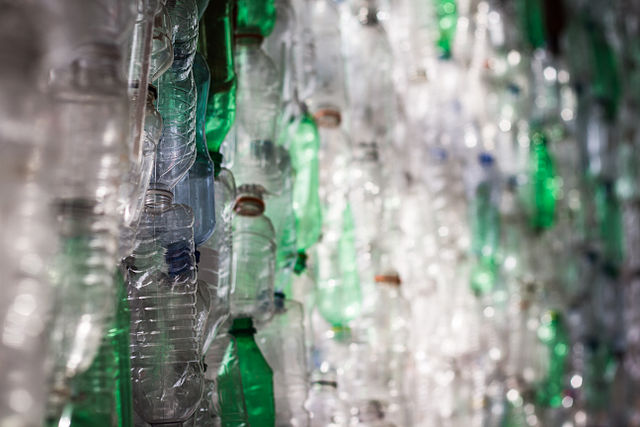Difference Between Acetone and Plastic
The advancement of technology, industrialization, and trade has seen the development and creation of many products. These products have diverse uses and make human life easier. Such is acetone and plastic.
What is Acetone?
This is a volatile, colorless and flammable product which is miscible in water, hence used as a solvent. It was first produced through the dry distillation of metal acetates in the late middle ages. It’s a good solvent for synthetic fibers and diverse types of fabrics. It is also used as a polyester thinner and also dissolving superglue and two-part epoxies before they harden. Due to its property of heavy duty degreasing, it is used in the preparation of metal before painting, and in the removal of rosin flux after the completion of soldering, which is helpful in the prevention of the rusty bolt effect.
Acetone is extensively used in the pharmaceutical, cosmetic as well as the domestic industry. As of environmental effects, due to the microbial consumption, acetone poses as a significant risk of the depletion of oxygen in aquatic environments.
What is Plastic?
Plastic is material consisting of a wide variety of semi-synthetic and synthetic organic compounds that are malleable and hence can be easily molded into solid objects without breaking. They are easy to manufacture, inexpensive and versatile hence have prevailed over other materials such as leather, wood, glass, metal, ceramic and bone.
Among the uses of plastic is packaging, building applications such as plumbing, piping and vinyl siding, furniture and toys. It’s also used in the medical field in the plastic surgery field. There have been concerns, however, on the environmental effects of plastic due to the fact that plastic degrades slowly and its effect on climate change due to global warming. Recycling is hence highly encouraged.
Similarities between acetone and plastic
- Both pose a risk to environmental degradation
- Both are flammable
Differences between acetone and plastic
-
Definition
Acetone is a volatile, colorless and flammable product which is miscible in water, hence used as a solvent. On the other hand, plastic is material consisting of a wide variety of semi-synthetic and synthetic organic compounds that are malleable and hence can be easily molded into solid objects without breaking.
-
Uses
Acetone is used as a polyester thinner and in dissolving superglue and two-part epoxies before they harden. Due to its property of heavy duty degreasing, it is also used in the preparation of metal before painting, and removing rosin flux after the completion of soldering, which is helpful in the prevention of the rusty bolt effect. It is also extensively used in the pharmaceutical, cosmetic as well as the domestic industry. On the other hand, plastic is used in packaging, building applications such as plumbing, piping and vinyl siding, furniture and toys and also in the medical field in the plastic surgery field.
-
Color
Acetone is colorless. On the contrary, plastic can be manufactured in many different colors.
-
Solvent Use
While acetone can be used to dissolve plastic, plastic cannot be used as a solvent.
Acetone vs. Plastic: Comparison Table
Summary of Acetone vs. Plastic
Both acetone and plastic have an array of uses in many industries. While acetone is mainly used as a solvent, plastic is mainly used for packaging. This has simplified human life. Care should, however, be taken as they can both cause harm to the environment.
- Difference Between Profit Center and Investment Center - July 2, 2022
- Difference Between Anti-Trust and Anti-Competition - June 6, 2022
- Difference Between Stocktaking and Stock Control - June 6, 2022
Search DifferenceBetween.net :
Leave a Response
References :
[0]Peraro James. Limitations of Test Methods for Plastics, Issue 1369. ASTM International Publishers, 2000. https://books.google.co.ke/books?id=55fKgR7d5cMC&pg=PA198&dq=Difference+between+acetone+and+plastic&hl=en&sa=X&ved=0ahUKEwib9efW9pTgAhUO2eAKHY_iDZUQ6AEIJjAA#v=onepage&q=Difference%20between%20acetone%20and%20plastic&f=false
[1]Solar Energy Research Institute. Biotechnology for Producing Fuels and Chemicals from Biomass: Fermentation chemicals from biomass. Solar Energy Research Institute Publishers, 1981. https://books.google.co.ke/books?id=uFnNtR23pYQC&pg=PA2&dq=uses+of+acetone&hl=en&sa=X&ved=0ahUKEwjDrbG595TgAhWSEBQKHVHmDlIQ6AEILTAC#v=onepage&q=uses%20of%20acetone&f=false
[2]Landrock Arthur. Handbook of Plastic Foams: Types, Properties, Manufacture and Applications. Elsevier Publishers, 1995. https://books.google.co.ke/books?id=RM8Qm6a5QGgC&printsec=frontcover&dq=Uses+and+properties+of+plastic&hl=en&sa=X&ved=0ahUKEwj_7bGA-JTgAhWrAWMBHfmPB2IQ6AEIJjAA#v=onepage&q=Uses%20and%20properties%20of%20plastic&f=false
[3]Image credit: https://upload.wikimedia.org/wikipedia/commons/thumb/8/8b/Plastic_Bottles_-_Waste_%287992944072%29.jpg/640px-Plastic_Bottles_-_Waste_%287992944072%29.jpg
[4]Image credit: https://www.flickr.com/photos/pheezy/83658850



